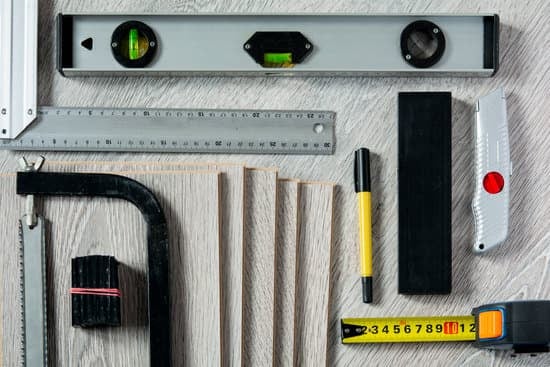Are you wondering how to get money to do home improvements? Home improvement projects can increase the value of your property, improve functionality, and enhance your overall quality of life. From kitchen renovations to bathroom upgrades, there are various ways to finance these projects. In this article, we will explore the different methods of funding your home improvements, helping you make informed decisions about the best financing options for your needs.
When it comes to making home improvements, the first step is to assess your financial situation. Do you have the means to fund the project on your own, or do you need assistance in securing the necessary funds? This initial evaluation will guide you in determining which financing options are most suitable for your specific circumstances.
In this article, we will delve into traditional home improvement loans, alternative funding options such as grants and government programs, utilizing personal savings and retirement accounts, tapping into home equity through lines of credit or cash-out refinancing, exploring personal loans tailored for home improvements, and considering credit cards and other financing alternatives. By understanding these various avenues for funding, you can effectively plan and execute your home improvement projects with confidence.
Assessing Your Financial Situation
When considering home improvements, the first step is to assess your financial situation and determine whether you have the means to fund the project on your own or if you need assistance. This assessment will help you understand how much money you will need and what funding options are available to you.
If you find that you do not have the resources to fund your home improvements on your own, there are several options for getting the money you need. One common option is a home improvement loan, which can come in several forms such as a personal loan or home equity line of credit. These traditional loans offer fixed interest rates and predictable monthly payments, making it easier to budget for your project.
Another option is to explore alternative funding options such as grants, government programs, and nonprofit organizations. Many local, state, and federal programs offer financial assistance for specific types of home improvements, particularly those related to energy efficiency or community development. These programs may have specific eligibility requirements, so it’s important to research and understand the application process.
If traditional loans and alternative funding options are not viable for your situation, personal savings and retirement accounts can be another source of funds for home improvements. Tapping into personal savings or retirement accounts can provide a low-cost and flexible way to finance your project without incurring additional debt.
| Funding Option | Pros | Cons |
|---|---|---|
| Home Improvement Loans | Fixed interest rates, predictable monthly payments | May require good credit history |
| Government Programs/Grants | Financial assistance available for specific types of improvements | Specific eligibility requirements |
| Personal Savings/Retirement Accounts | No interest or fees, flexible repayment terms | Limits potential long-term growth of savings/retirement funds. |
Exploring Traditional Home Improvement Loans
Understanding Traditional Home Improvement Loans
Traditional home improvement loans, such as a home equity loan or HELOC (Home Equity Line of Credit), are popular options for funding home improvement projects. These loans allow homeowners to borrow money using their home as collateral, typically offering lower interest rates compared to personal loans or credit cards. With a traditional home improvement loan, you can borrow a lump sum of money or utilize a line of credit to fund your renovation projects.
The Pros of Traditional Home Improvement Loans
One of the main advantages of traditional home improvement loans is the lower interest rates they offer compared to other types of financing. This can result in significant savings over time, especially for larger renovation projects that require substantial funds. Additionally, these loans often come with fixed interest rates and predictable monthly payments, making it easier for homeowners to budget and plan for their project expenses.
The Cons of Traditional Home Improvement Loans
While traditional home improvement loans offer attractive interest rates and structured repayment plans, there are potential drawbacks to consider. For example, using your home as collateral means putting it at risk if you’re unable to make payments on the loan.
Additionally, the application process for these loans can be more extensive and time-consuming compared to other financing options. Borrowers need to have sufficient equity in their homes and a good credit score to qualify for these types of loans.
As you consider traditional home improvement loans as an option for funding your renovation projects, it’s crucial to weigh the pros and cons carefully and ensure that this type of financing aligns with your financial goals and circumstances.
Alternative Funding Options
There are several alternative funding options available for individuals looking to do home improvements but who may not have the means to do so out of their own pocket. These options can include grants, government programs, and nonprofit organizations that specialize in providing financial assistance for home improvement projects. These resources can be valuable for homeowners who need help covering the costs of renovations, repairs, or upgrades to their property.
Grants are a form of financial aid that does not need to be repaid and are often provided by government agencies, private foundations, or nonprofit organizations. These grants may have specific eligibility requirements based on income level, location, or the type of project being undertaken.
Government programs can also offer financial assistance or low-interest loans to homeowners looking to make improvements to their homes. These programs may be offered at the federal, state, or local level and can provide valuable support for qualifying individuals.
Nonprofit organizations can also be a valuable resource for homeowners seeking funding for home improvements. These organizations may offer grants or low-cost loans to assist with renovations or repairs for individuals in need. By exploring these alternative funding options, homeowners can access financial assistance that can help them complete necessary home improvement projects without putting undue strain on their personal finances.
Funding Your Home Improvements
When it comes to funding home improvements, one of the first places to look is within your own financial resources. Personal savings and retirement accounts can be a valuable source of funds for making upgrades to your home. Here are some ways you can utilize these resources for your home improvement projects:
- Assess Your Savings: Take a look at your personal savings and see if there is enough to cover the cost of the improvements you have in mind.
- Consider Your Retirement Accounts: If you have a 401(k) or IRA, you may be able to tap into these accounts for home improvements through a withdrawal or loan.
- Weigh the Pros and Cons: Before dipping into your savings or retirement accounts, consider the potential impact on your future financial security and consult with a financial advisor if necessary.
Utilizing personal savings and retirement accounts for home improvements can offer several advantages. This includes avoiding interest payments that come with traditional loans, maintaining equity in your home, and having full control over how the money is spent.
However, it’s important to consider the potential drawbacks as well. Withdrawing from retirement accounts may have tax implications and early withdrawal penalties, while depleting personal savings could leave you vulnerable in case of unexpected expenses or emergencies. It’s crucial to carefully weigh these factors before deciding whether to use personal savings or retirement accounts for funding your home improvements.
Utilizing a Home Equity Line of Credit or Cash-Out Refinance
If you’re in need of a substantial amount of money for home improvements, one option to consider is utilizing a home equity line of credit (HELOC) or a cash-out refinance. Both of these options allow you to tap into the equity you’ve built up in your home, providing you with the funds needed to make necessary upgrades or renovations.
A HELOC is a line of credit that uses your home as collateral, allowing you to borrow against the equity you have in your property. This can be a flexible and convenient option for funding home improvements as you only withdraw what you need and pay interest only on the amount borrowed.
On the other hand, a cash-out refinance involves replacing your current mortgage with a new one that has a higher balance, allowing you to take out the difference in cash.
When considering these options, it’s important to weigh the pros and cons. Both HELOCs and cash-out refinances offer lower interest rates compared to personal loans or credit cards, making them an attractive choice for funding large-scale projects. However, they also come with associated fees and closing costs that should be factored into your decision-making process.
Ultimately, utilizing a HELOC or cash-out refinance requires careful consideration and thorough financial planning. It’s crucial to consult with a trusted financial advisor or mortgage professional to explore how these options fit within your overall financial goals and circumstances.
| Pros | Cons |
|---|---|
| Lower interest rates | Associated fees and closing costs |
| Flexible borrowing only what is needed through HELOC | Risk of losing your home if payments are not made |
| Potential tax benefits on interest paid | Increase in long-term debt through cash-out refinance |
Exploring the Potential of a Personal Loan for Home Improvements
If you’re considering making home improvements but don’t have the available cash to fund your project, a personal loan might be a viable option. Personal loans can provide the funds needed to complete renovations, upgrades, or repairs, allowing you to enhance your living space without draining your savings account. Here are some key points to consider when exploring the potential of a personal loan for home improvements:
- Shop Around for the Best Rates: Before committing to a personal loan for your home improvements, it’s essential to compare rates and terms from multiple lenders. Look for competitive interest rates, favorable repayment terms, and minimal fees to ensure you’re getting the best deal possible.
- Consider Your Credit Score: Your credit score will play a significant role in determining the interest rate and approval of your personal loan. If you have excellent credit, you may qualify for lower rates and higher loan amounts. However, if your credit is less than stellar, you may face higher interest rates or difficulty securing a loan.
- Weigh the Benefits and Risks: Personal loans offer the flexibility of using the funds for various purposes, including home improvements. However, it’s crucial to weigh the benefits of quick access to cash against the risks of taking on additional debt. Consider how the monthly payments will fit into your budget and whether the long-term cost outweighs the short-term benefit.
Ultimately, obtaining a personal loan for home improvements can be a practical way to finance your renovation projects. By carefully considering factors such as interest rates, credit score requirements, and overall affordability, you can make an informed decision about whether a personal loan is the right choice for funding your home improvements.
Considering Credit Cards and Other Financing Options for Home Improvements
When it comes to funding home improvements, considering credit cards and other financing options can be a viable solution for many homeowners. However, it is important to carefully weigh the pros and cons of each option before making a decision.
The Pros and Cons of Using Credit Cards
Credit cards can be a convenient way to finance home improvements, especially for smaller projects. They often come with rewards programs that can provide benefits such as cash back or travel points. Additionally, some credit cards offer introductory 0% APR periods, allowing homeowners to make purchases without accruing interest for a set period of time. On the downside, credit card interest rates can be high once the introductory period ends, potentially leading to significant debt if not managed properly.
Exploring Other Financing Options
In addition to credit cards, there are other financing options available for home improvements. Personal loans from banks or online lenders are a popular choice and offer fixed interest rates and predictable monthly payments. Another option is using contractor financing, where the contractor arranges the financing for the project. While this can be convenient, it’s important to carefully review all terms and conditions, as contractor financing may come with higher interest rates.
Making Informed Decisions About Financing
Before deciding on how to get money to do home improvements through credit cards or other financing options, it’s crucial for homeowners to conduct thorough research and compare offers from different lenders. Understanding the terms of each financing option will help in making informed decisions that align with individual financial goals and capabilities. Ultimately, finding the right financing solution can turn home improvement dreams into a reality without sacrificing financial stability in the process.
Conclusion
In conclusion, there are various ways to finance your home improvements, and it’s important to carefully consider the best option for your particular situation. Whether you have the means to fund the project yourself or need assistance from loans, grants, or other programs, it’s crucial to weigh the pros and cons of each option.
Assessing your financial situation and exploring traditional home improvement loans, alternative funding options, personal savings, retirement accounts, home equity lines of credit, cash-out refinancing, personal loans, and credit cards can help you make an informed decision.
When deciding how to get money to do home improvements, it’s important to carefully consider the impact on your overall financial health. Taking advantage of government programs or nonprofit organizations that offer assistance for specific projects can be a viable option for those who qualify. Additionally, using personal savings or retirement accounts ensures that you won’t incur debt from financing options.
Ultimately, the decision on how to fund your home improvements will depend on your individual circumstances and financial goals. By taking the time to explore all available options and weighing the potential risks and benefits of each, you can make an informed decision that will best suit your needs while maintaining financial stability.
Frequently Asked Questions
How Do People Pay for Their Renovations?
People pay for their renovations in a variety of ways. Some use personal savings or emergency funds, while others may take out a home equity loan or line of credit. Some may also use credit cards or contractor financing.
Are Renovation Loans a Good Idea?
Renovation loans can be a good idea for some people, especially those who don’t have enough cash or equity to cover the costs of the renovations. However, it’s important to carefully consider the terms and interest rates of the loan before committing to it.
Can I Borrow From My IRA for Home Improvement?
Yes, it is possible to borrow from your IRA for home improvement expenses. However, there are strict guidelines and limitations on how much you can borrow and how the funds can be used. It’s important to fully understand the rules and potential consequences before making any withdrawals.

I’m thrilled to have you here as a part of the Remodeling Top community. This is where my journey as an architect and remodeling enthusiast intersects with your passion for transforming houses into dream homes.





